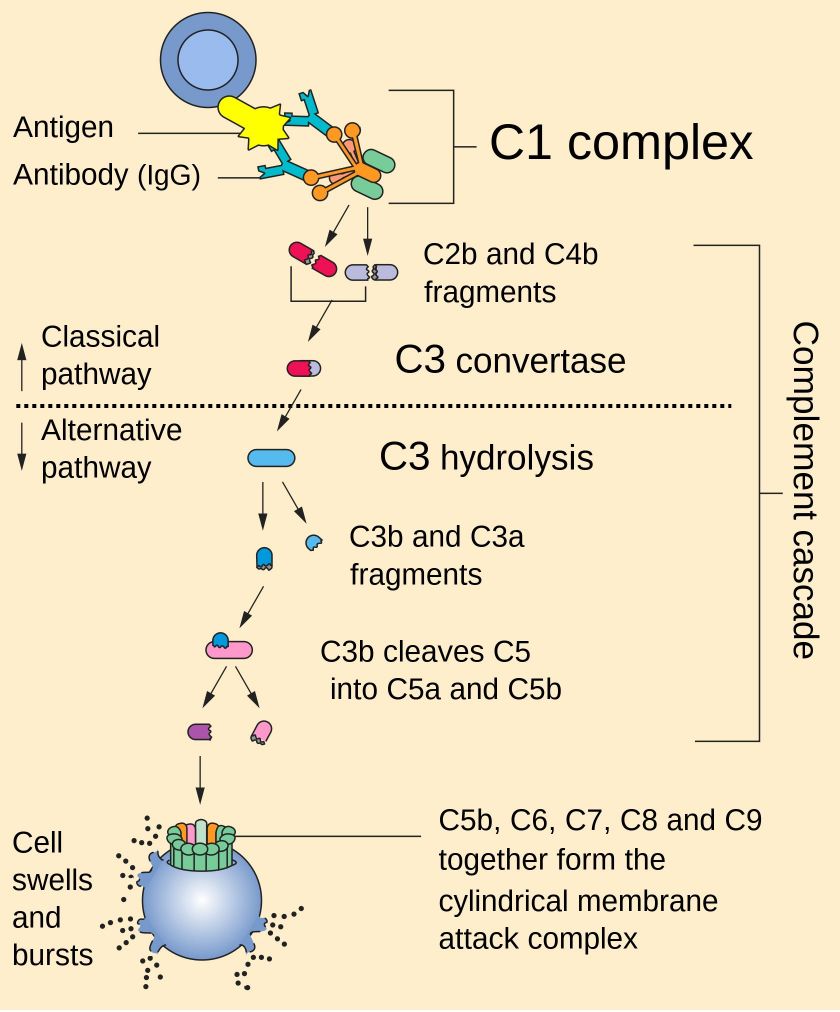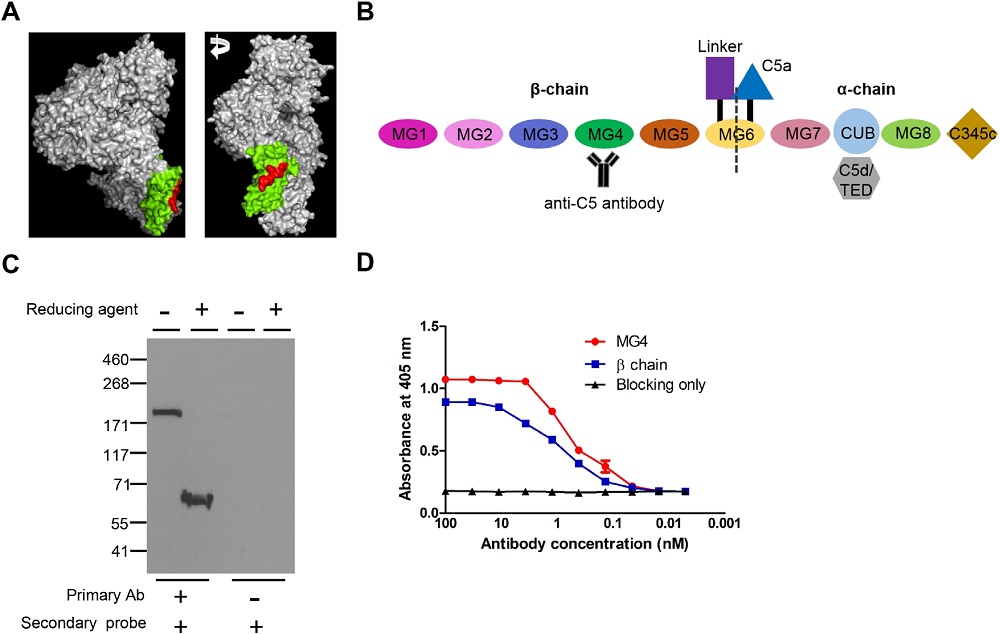Based on the intensive research in complement therapeutic over the past years, Creative Biolabs is honored to offer a full range of complement therapeutic services based on the C5-target for our customers who are in the need of complement therapeutic research.
With the first complement inhibitor-a humanized monoclonal antibody against complement component C5) approved by the US FDA, the complement system has emerged as an attractive target for upstream intervention in numerous conditions and has advanced into the spotlight of drug discovery. Owing to the efforts within this field in recent years, the pipelines are filled with a variety of promising candidates.
 Distributed under Public Domain, from Wiki,
without modification.
Distributed under Public Domain, from Wiki,
without modification.
Fig.1 The complement system.
C5 Target
The complement cascade procedures are orchestrated by a panel of highly specific proteases which are activated successively during steps of the process. The complement component C5 near the end of the complement cascade is critical for this process which makes it an effective therapeutic target to discount the activation of complement and prevent functional cells lysis in certain disorders. C5 is cleaved into fragments of C5a and C5b by C5 convertase, an essential protease formed during the upstream activation process. The anaphylatoxin C5a engaging two cell surface G-protein coupled receptors is a powerful inflammatory substance whereas the C5b involves in the formation of the ultimate membrane attack complex (MAC). And the MAC could directly lead to the lysis of target cells resulting in corresponding physiological or pathological process of the body. Current drug candidates in the pipelines focus primarily on the inhibition of downstream processes around C5 and the anaphylatoxin C5a, one of its cleavage fragments.
Therapeutic Strategy Based C5
The complexity of the complement system and diversity of initiation of complement cascade give the opportunity to develop effective targets for complement therapeutic. All stages from the initiation and activation process to the terminal activity can hypothetically be stopped or blocked in a selective way by targeting specific components of the complement system. As complement component C5 keeps one of the two critical complexes within the complement cascade, selective inhibition of C5 or active fragments of C5 by monoclonal antibodies (mAbs) and development of small molecules, peptidomimetics or proteins point to the corresponding receptors have been considered the promising therapeutic options for recent years.
With advanced technologies and seasoned experts in this field, Creative Biolabs is confident in offering the C5-target complement therapeutic services for a wide range of disorders which including but not limited to Meningococcal Infection.
We are more than happy to share our experience with our customers and guide your complement therapeutic research. If you are interested in our service, please feel free to contact us for more information and a detailed quote.
Published Data
 Fig.2 Designing small-molecule modulators targeting complement component C5.1
Fig.2 Designing small-molecule modulators targeting complement component C5.1
Age-related macular degeneration (AMD) significantly contributes to visual impairment, neovascular AMD with choroidal neovascularization (CNV) exacerbating visual decline. Clinical and postmortem investigations have linked CNV to complement system activation. In this research, researchers illustrated that an anti-mouse C5 antibody effectively impeded CNV triggered by laser photocoagulation in mice by targeting the MG4 domain of the β chain. ELISA analyses confirmed its specific binding to the recombinant β-chain and MG4 domain at sub-nanomolar concentrations. This antibody curtailed C5a, monocyte chemoattractant protein-1, and VEGF levels, mitigating inflammatory cell infiltration and CNV development, without causing toxicity in normal retinas.
Reference
-
Jo, Dong Hyun, et al. "Anti-complement component 5 antibody targeting MG4 domain inhibits choroidal neovascularization." Oncotarget 8.28 (2017): 45506. Distributed under Open Access license CC BY 4.0, without modification.
Related Product
Questions & Answer
A: Emerging research endeavors seek to broaden the therapeutic spectrum of C5 inhibition, extending its reach beyond traditional complement-mediated disorders. Investigation into its utility for managing neuroinflammatory disorders and modulation of chronic inflammatory states holds promise, underscoring the ongoing evolution of C5-targeted therapies.
A: Advances in structural biology have elucidated the three-dimensional architecture of C5 and its binding interfaces, offering insights into potential druggable sites. This knowledge informs the rational design of innovative C5-targeted agents, including small molecules, peptides, or bi-specific antibodies, which can selectively disrupt C5 function while minimizing off-target effects.
A: To address immunogenicity concerns associated with C5-targeted therapies, researchers are investigating various approaches, such as engineering therapeutic antibodies to minimize immunogenic epitopes or employing immune modulators to induce tolerance. These strategies aim to prolong treatment efficacy while minimizing immune responses that could compromise therapeutic benefits.
For Research Use Only.
Related Sections:


 Fig.2 Designing small-molecule modulators targeting complement component C5.1
Fig.2 Designing small-molecule modulators targeting complement component C5.1